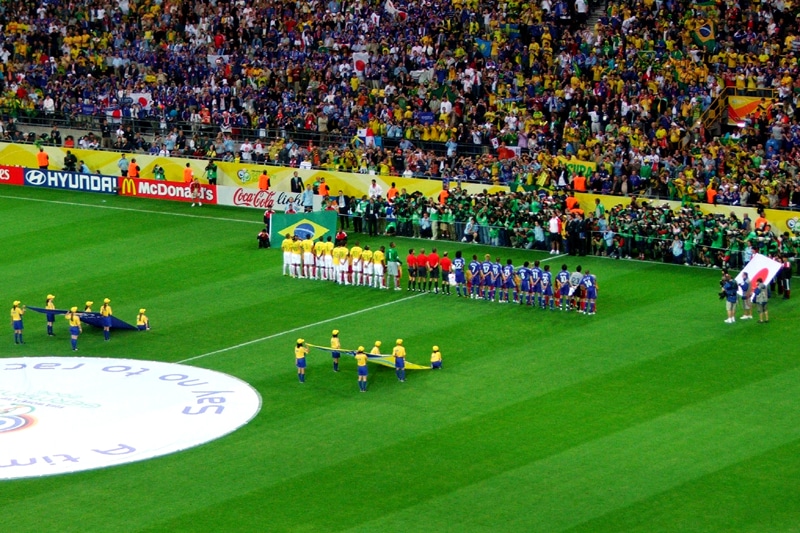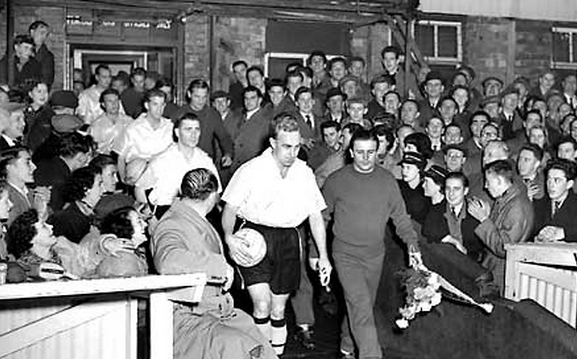How the World of Soccer has Gotten Smaller

This guest post was contributed by Austin Reynolds.
Soccer captivates the world unlike any other sport on the planet. It’s the only sport that is played and watch in every country around the world, and can get viewership of one billion people for a match.
Nowadays, someone can watch the Barclays Premier League, Bundesliga, Champions League, or the World Cup despite being thousands of miles away. Therefore, the best teams and their styles can be broadcasted for millions at their leisure.
Yet it always wasn’t like that.
Before the days of television, live streams, and Twitter, the main way that football players and fans were exposed to new styles was by being there. Clubs would go on tours to foreign nations, not only as a means to generate revenue for the commercial department and sponsors, but to test themselves against against clubs from different environments and cultures. They would go toe to toe with their systems and tactics in two contrasting approaches.
It was the early days of the sport, and ideas about how to best play the game were starting to spring up all over the world. As the English brought the game throughout Europe and then to the rest of the world, the natives of the area each added their own spin to the ideas of the English.
More importantly, the “friendlies” weren’t glorified exhibitions aimed to earn money. They were competitive matches. The most famous of these friendlies being Wolverhampton Wanderers vs Budapest Honved in 1954, held just a year after the famous England – Hungary friendly at Wembley in which the Hungarians won 6-3. Honved were in the midst of a European tour, showcasing the fluid tactics and talent prevalent throughout Hungary at the time. The 55,000 capacity Molineux was sold out, and the English side sought revenge for the embarrassment their country had faced a year earlier.
That match was won by Wolves 3-2, and proved to be a vindication of the English style of football in the eyes of Wolverhampton manager Stan Cullis. He had his side challenged in a manner that Wolves couldn’t experience in England at the time, as English teams at the time more or less played the same way. The results of hosting a foreign club was nothing but beneficial for Cullis’ side, while the Hungarians after learned they may need to adjust some facets of their play if they wish to remain at the top. Overall, it provided an experience for both clubs that some changes have to be made to their play if they wish to be the best in Europe. It also sent a message to Europe that a continental competition would be of interest to the fans, as they wanted to see clashes between Europe’s largest clubs on a big scale, and led to the creation of the European Cup.
That opportunity for improvement and competition through a club tour has not faded away since that November night over 60 years ago. Nowadays, tours are more accessible and can be taken by more than just professional teams. Youth clubs and amateur teams can go abroad with much easier access than in years past, and get the same tangible results that professional sides get on their tours.
Being in a foreign country with a different play style, culture, and language provides an immersion and exposure that simply can’t be rivaled by watching it on television. The opportunity is there to watch some of the highest level soccer the world has to offer in incredible atmospheres. In matches, players may be required to solve problems on the field they have never encountered, and get to experience coaching from a different perspective. It challenges the way you currently see the world from a soccer and non-soccer viewpoint, broadening one’s world perspective in the process. Despite all of the technology at our fingertips, travelling remains the best way to be exposed and take in new ideas and experiences.
As time has gone on, many things about soccer have changed. One thing however has remained the same: nothing beats being there.











